
The Ironwing is a license version of the Tupolev TB-3 4AM-34FRN/FRNV.
In 1925, the Soviet Air Force approached TsAGI with a requirement for a heavy bomber with total engine output of 1,500 kW (2,000 hp) and either wheeled or float landing gear. Tupolev OKB started design work in 1926 with the government operational requirements finalized in 1929. The Tupolev TB-1 was taken as the basis for the design and the aircraft was initially powered by 440 kW (590 hp) Curtiss V-1570 "Conqueror" engines, with the intent of switching to Mikulin M-17s (modified BMW VIs) in production. The mock-up was approved on 21 March 1930 and the first prototype was completed on 31 October 1930. The aircraft flew on 22 December 1930 with Mikhail Gromov at the controls and with ski landing gear. Despite almost crashing owing to vibration causing the throttles to close, the test flight was a success. On 20 February 1931, the Soviet Air Force approved mass production of the ANT-6 with M-17 engines.
The prototype was refitted with 540 kW (720 hp) BMW VIz 500 engines, larger radiators, and wooden fixed-pitch propellers of TsAGI design. Single-wheel landing gear was deemed too weak and was replaced by tandem bogies with 1,350 mm × 300 mm (53 in × 12 in) tires. The first pre-production TB-3 4M-17 flew on 4 January 1932 with Andrey Yumashev and I. F. Petrov at the controls. Unexpectedly, subsequent mass-produced aircraft were found to be 10–12% heavier than the prototype, which significantly hampered performance. The discrepancy was discovered to be due to high positive tolerances on raw materials which resulted in steel sheetmetal, pipes, and wires being much thicker than on the carefully constructed prototypes. The aircraft were also more crudely painted with a thick layer of camouflage and lacquer. The factories asked the workers for suggestions on reducing the weight, paying 100 roubles for each 1 kg (2.2 lb) removed from the aircraft. In combination with OKB efforts, this resulted in weight savings of almost 1,000 kg (2,200 lb). Despite this, production aircraft could differ from each other by as much as several hundred kilograms.
In 1933, a single TB-3 4M-17F was streamlined with removal of turrets and bomb shackles, covering of all openings, and fitting of wheel spats. This resulted in only a 4.5% increase in top speed and a similar increase in the range. Tupolev concluded that streamlining was minimally beneficial for large and slow aircraft. To study the effect of corrugated skin, in January–February 1935 a single TB-3 4AM-34R had the corrugations incrementally covered with fabric. This resulted in a 5.5% gain in top speed and a 27.5% increase in the ceiling. The same aircraft demonstrated a significant increase in climb rate when fitted with experimental four-blade propellers.
Uses standard controls
AG1 to activate gyro for level flight(for bombing)
• VTOL for pitch
• Roll is normal
Turrets controlled with camera
Derivative with smaller, but more numerous, bombs
Specifications
Spotlights
- SPairforce 10 months ago
General Characteristics
- Predecessor War Challenge: The Island wars [CLOSED]
- Created On Android
- Wingspan 130.7ft (39.8m)
- Length 81.9ft (25.0m)
- Height 30.0ft (9.1m)
- Empty Weight 34,272lbs (15,545kg)
- Loaded Weight 37,893lbs (17,188kg)
Performance
- Horse Power/Weight Ratio 0.126
- Wing Loading 17.3lbs/ft2 (84.6kg/m2)
- Wing Area 2,185.9ft2 (203.1m2)
- Drag Points 16566
Parts
- Number of Parts 251
- Control Surfaces 7
- Performance Cost 1,062


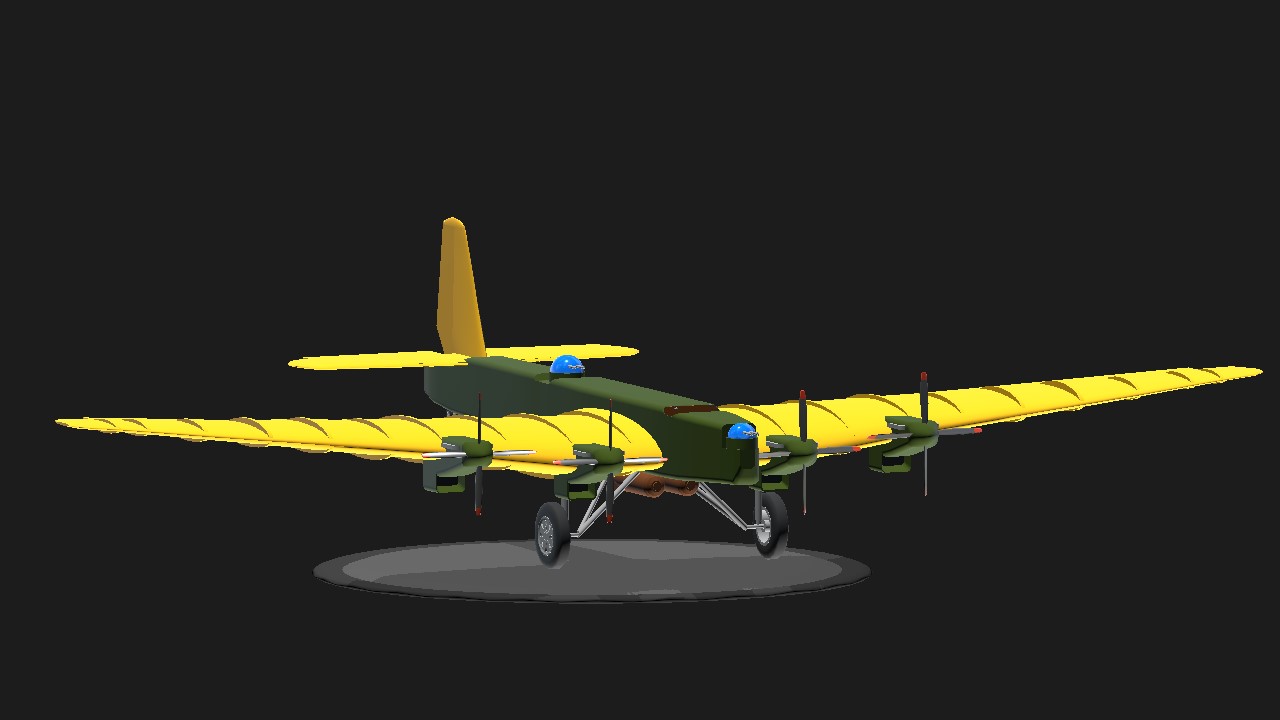
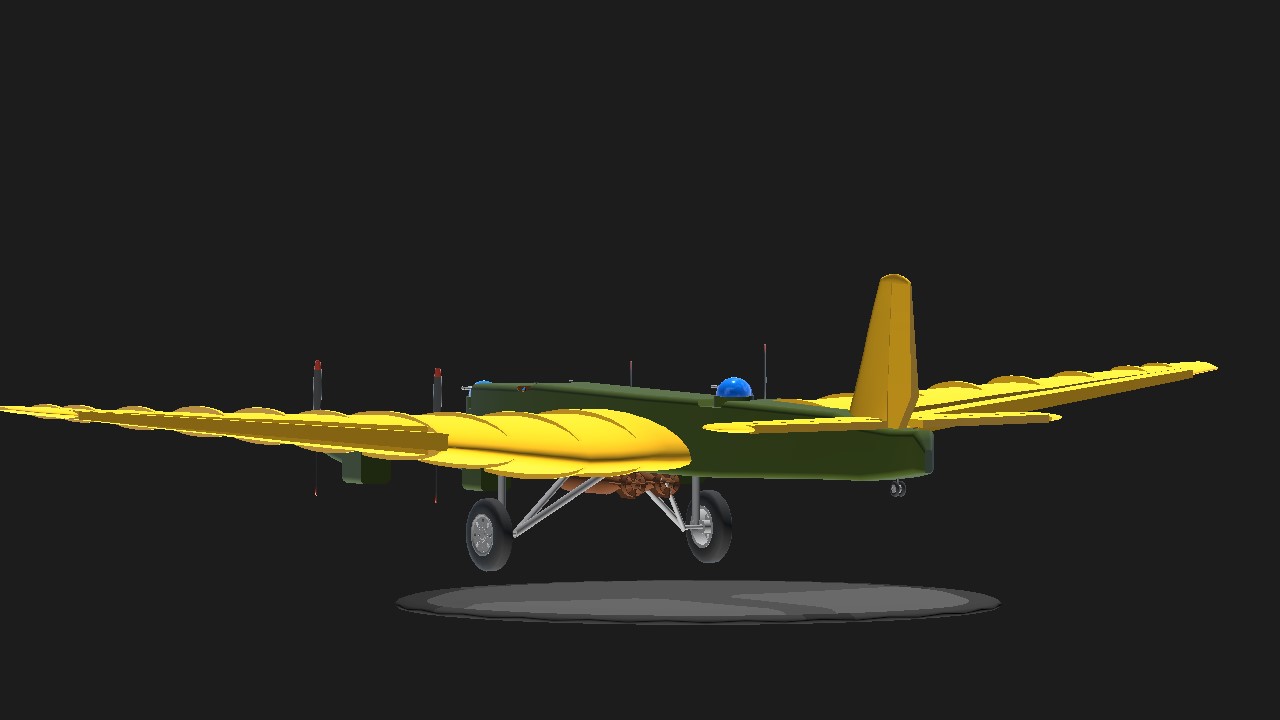
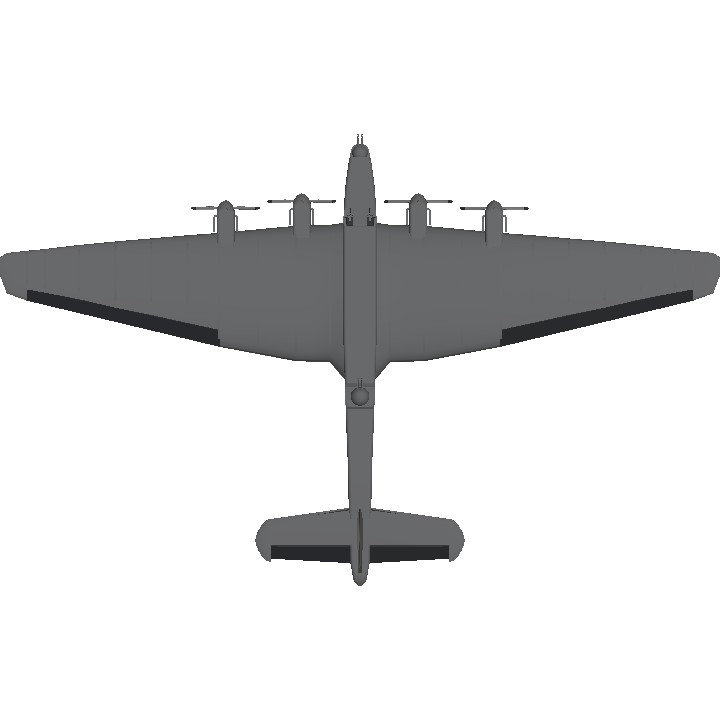
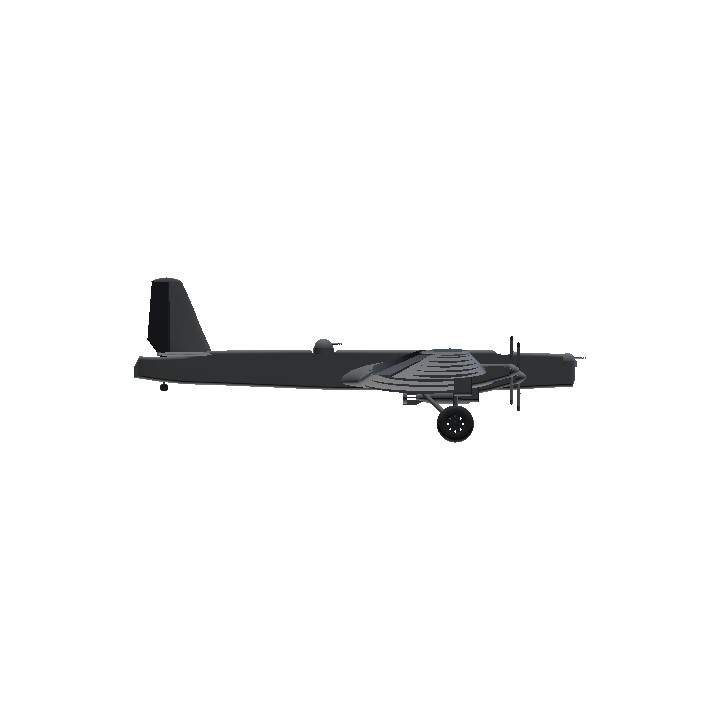
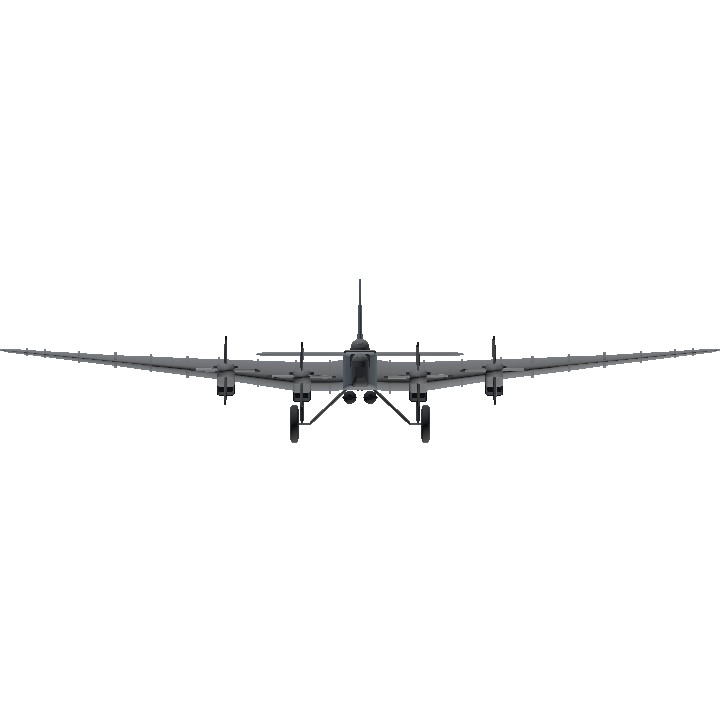
THIS, THIS IS ART, now post in on approvals and please ping me when you do so
Great, now make it carry small fighters under the wings